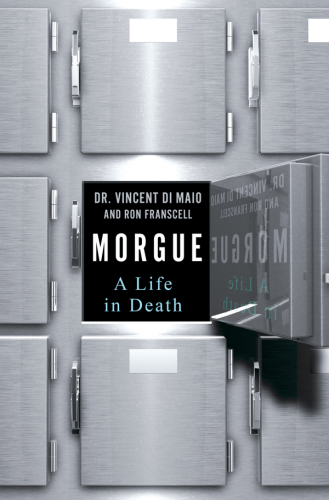
Morgue
A Life in Death
زندگی در مرگ
کتاب های مرتبط
- اطلاعات
- نقد و بررسی
- دیدگاه کاربران
نقد و بررسی

Starred review from March 14, 2016
In this engrossing look behind the headlines of notorious homicides, Franscell, a veteran crime writer, aids DiMaio, a renowned forensic pathologist, in narrating the career he made of solving some of the most disturbing puzzles of the dead. In 40 years of work, DiMaio has worked on cases that involved the disturbed and infanticidal Martha Woods; the grisly exhumation of J.F.K. assassin Lee Harvey Oswald, whose own mouth debunked a conspiracy theory about his identity; and a deviously wicked nurse, Genene Jones, who was jailed for killing one patient and “deliberately injuring” another, and suspected of being responsible for dozens of other deaths. The often lurid, occasionally sad, and always intriguing details never overpower the drive for justice that fuels DiMaio’s life and work. “Forensic evidence,” he writes, “tells us honestly and candidly what we need to know, even when we want it to say something else.” The killing of teenager Trayvon Martin by neighborhood-watchman George Zimmerman serves as DiMaio’s example of an instance about which, even after the question of homicide was settled, “the bigger questions about humanity” were left unanswered. Di Maio and Franscell deliver a well-paced, thoughtful, and absorbing work that will fascinate crime buffs and scholars alike.

April 1, 2016
This collection of narratives describes various high-profile and historically significant cases on which pathologist Di Maio has consulted during his esteemed career, including the trial for the murder of Trayvon Martin and the exhumation of Lee Harvey Oswald. He illuminates the world of forensic pathology while showing its contribution to the evolution of evidence-based judgments in criminal trials. Di Maio emphasizes the centrality of impartiality to the profession: how his job is to determine the cause and manner of death, regardless of any effects his conclusions may have. The examples well satisfy humanity's obsession with murder and justice. They are written (with journalist Franscell) skillfully enough that even when a suspect's guilt is painfully obvious, the methodical and deliberate presentation of proof helps the reader better appreciate and understand the challenges of the justice system. As with William R. Maples's Dead Men Do Tell Tales, Di Maio's work asserts the value of his medical specialty while lamenting the steadily decreasing number of its competent practitioners. VERDICT Readers interested in forensic pathology, medical investigation, justice, courtroom dramas, and criminal law will find this book simply to die for.--Ricardo Laskaris, York Univ. Lib., Toronto
Copyright 2016 Library Journal, LLC Used with permission.

Starred review from April 1, 2016
Corpse flies, gunshot residue, and a gaggle of grisly details make the stories in Morgue vividly memorable and unsettling. Medical examiner DiMaio, along with journalist Franscell, provide a peek into the often wild world of forensic science. Utilizing high-profile and puzzling cases he has investigated, DiMaio illustrates just how critical a thorough autopsy and close attention to even the littlest details are. Despite an exhaustive examination, about five percent of deaths in America still cannot be explained. DiMaio acknowledges that the truth can be interpreted many ways. Cases presented include a murderous mother, a car bombing, a U.S. Army general found hanging with his hands tied behind his back, a pediatric nurse who deliberately killed a little girl with an injection of succinylcholine (a paralytic medication), the exhumation of the body of Lee Harvey Oswald, the story of the West Memphis Three, and the death of Trayvon Martin. One chapter recounts DiMaio's growing up in Brooklyn and his path to becoming a pathologist: I detested medical school. It was four years of Marine boot camp, but not as pleasant. Fans of the TV shows CSI, Bones, or Quincy, M.E., will love this book.(Reprinted with permission of Booklist, copyright 2016, American Library Association.)

























دیدگاه کاربران